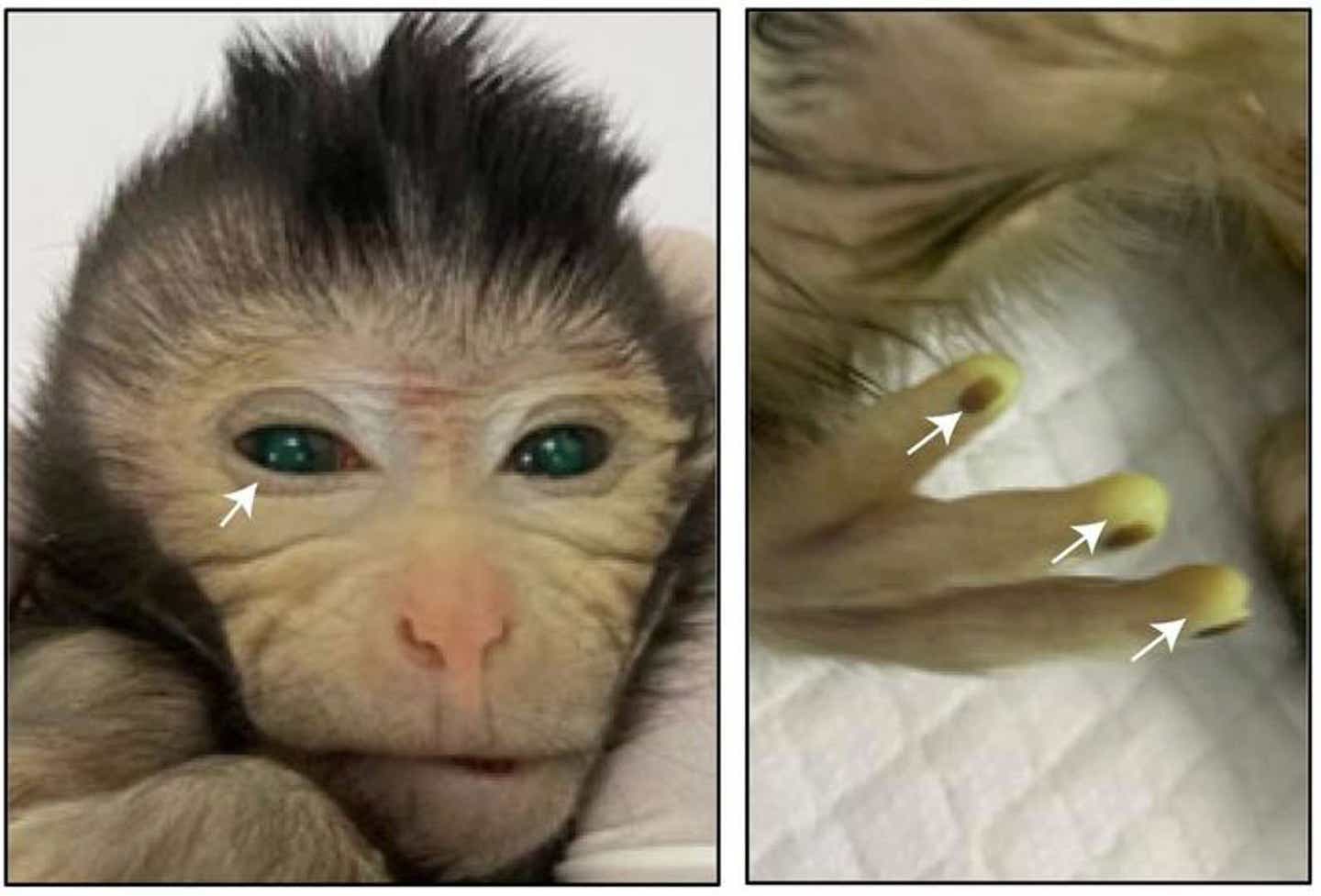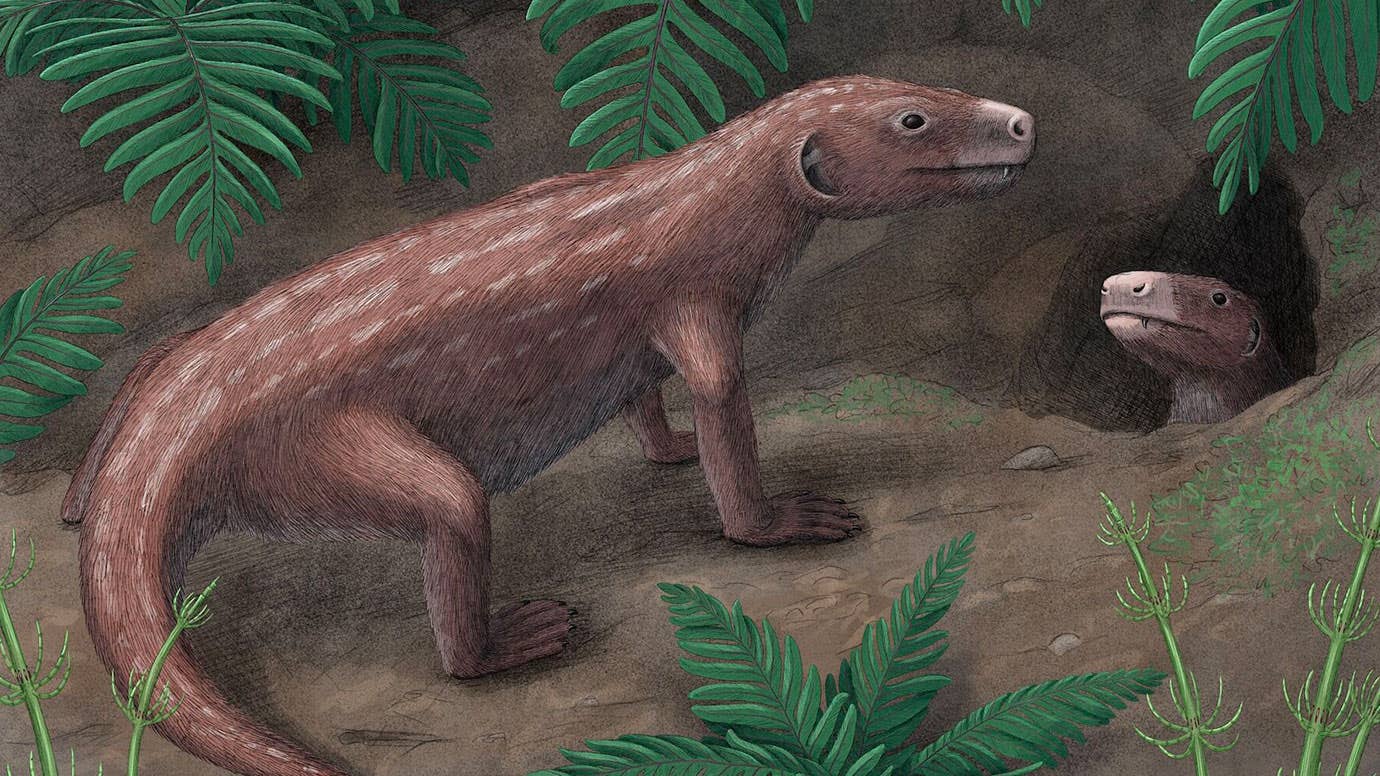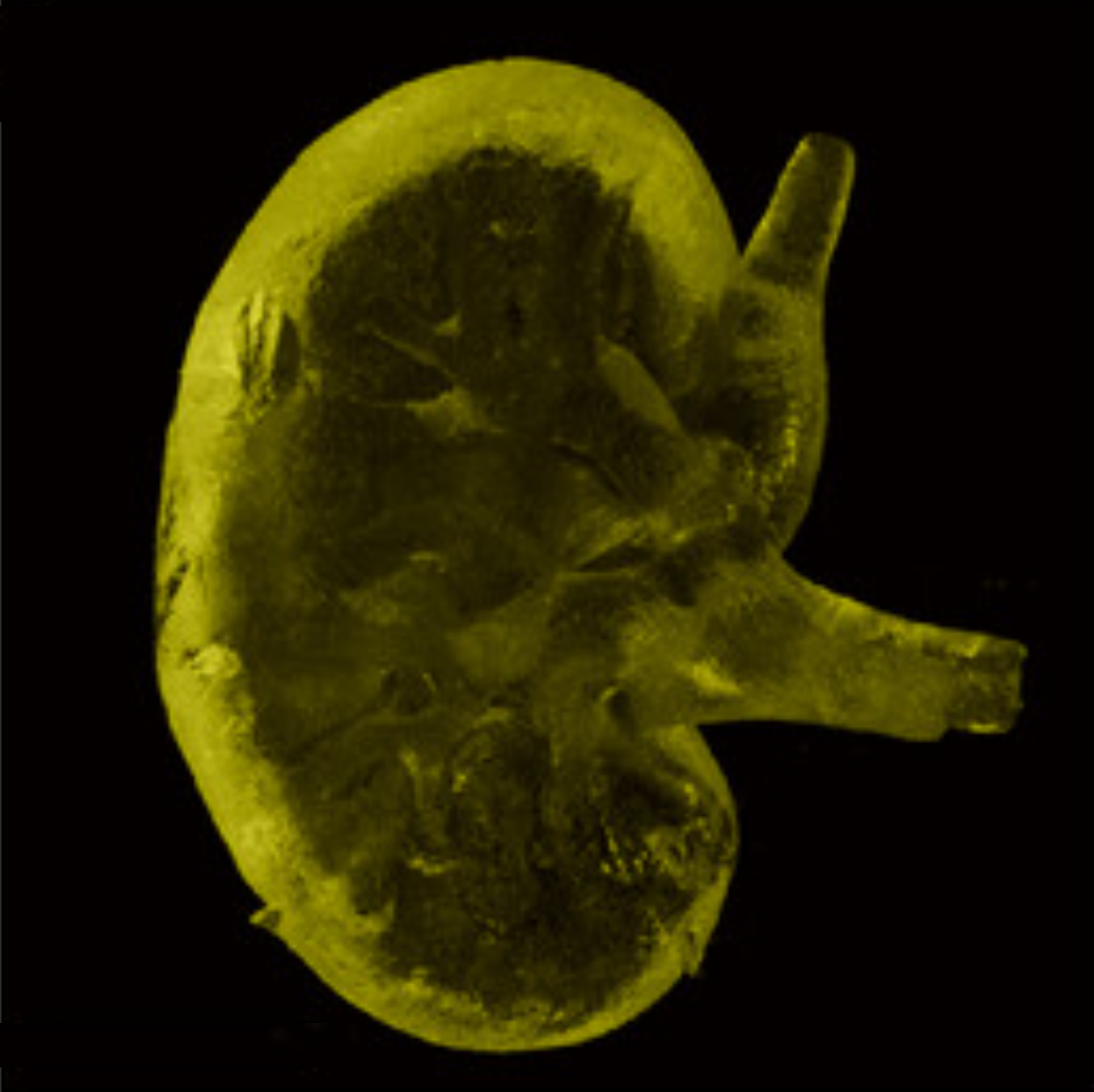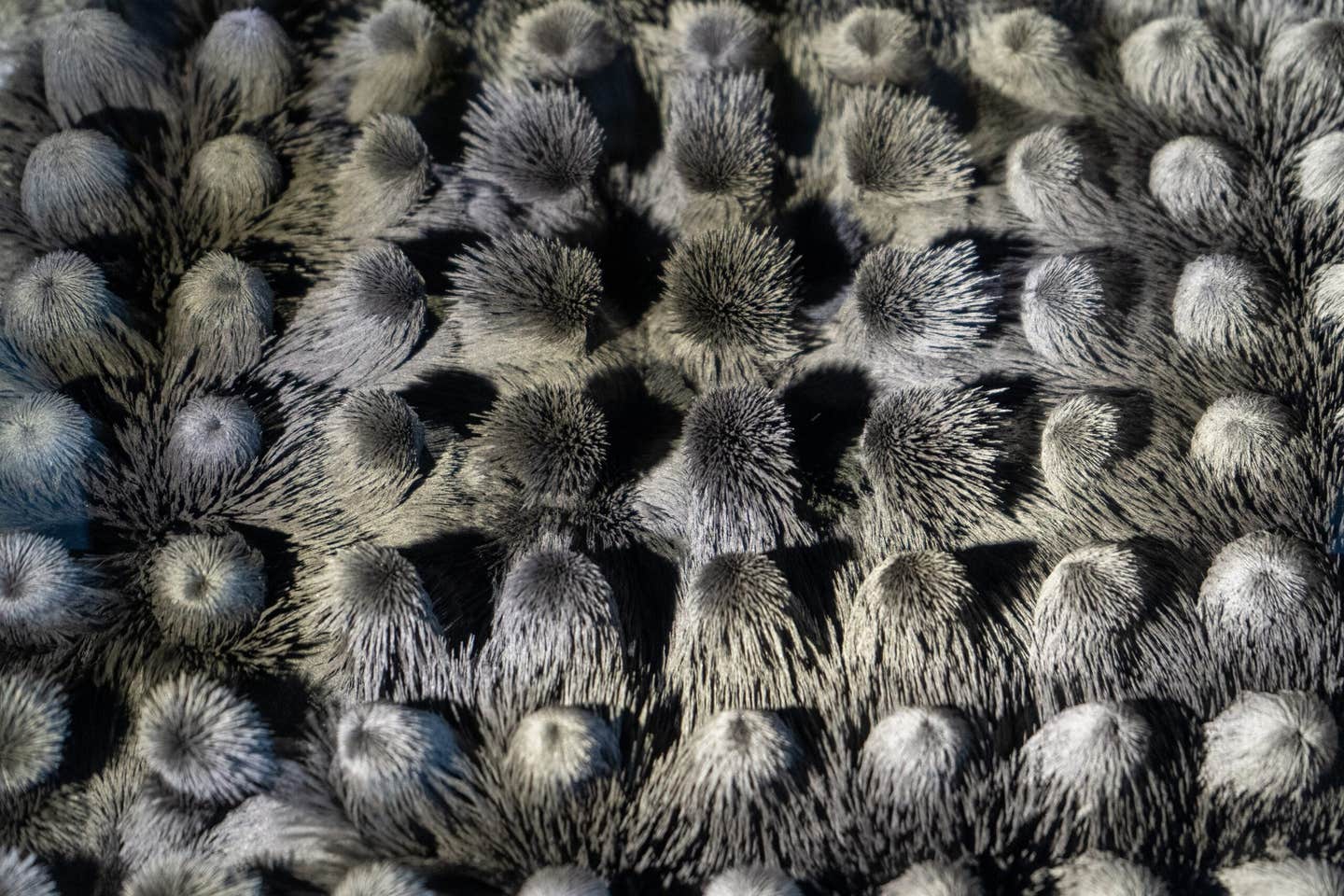Scientists genetically engineer the world’s first monkey with two different sets of DNA
This scientific milestone, previously accomplished in rodents, marks the first instance of success in primates.

[Nov. 23, 2023: JD Shavit, The Brighter Side of News]
An image of the monkey chimera, showing the glowing green fingers and eyes that indicate where the stem cells took hold. (CREDIT: CELL)
In a groundbreaking achievement, researchers have successfully created a chimeric monkey with two different sets of DNA through the injection of stem cells from one monkey embryo into another of the same species. This scientific milestone, previously accomplished in rodents, marks the first instance of success in primates. While the scientific community hails this achievement for its potential in advancing medical research, ethical concerns have been raised due to the tragic fate of the chimeric monkey.
"This is a long-sought goal in the field," states Zhen Liu of the Chinese Academy of Sciences (CAS). "This work could help us to generate more precise monkey models for studying neurological diseases as well as for other biomedicine studies."
The concept of chimerism, wherein an individual harbors two or more different sets of DNA in their body, is not new to science. It can occur naturally, such as when one embryo in a set of fraternal twins dies in the womb, and the other absorbs its cells. This phenomenon has been documented in various species, including birds, reptiles, mammals, and even humans.
Additionally, chimerism can be artificially induced through organ or bone marrow transplants. In this case, researchers used stem cells capable of developing into any cell type to create the chimeric monkey.
Related Stories
To accomplish this remarkable feat, Liu and his colleagues extracted stem cells from seven-day-old embryos of long-tailed macaques (Macaca fascicularis) and labeled them with green fluorescent protein for future identification. These labeled cells were then injected into four- to five-day-old embryos of the same species, which were subsequently implanted into 40 female macaques serving as surrogate mothers.
Of the surrogate mother monkeys, 12 became pregnant, and six gave birth to live young. Among the offspring, only one live-birth male and one aborted male exhibited substantial chimerism. The live monkey's tissues were composed of donor cells to an average of 67 percent, though the percentage varied across the 26 different tissue types tested, ranging from 21 percent to 92 percent.
Visible evidence of donor cells was found in the live monkey's fingertips and around its eyes, marked by glowing green fluorescence. The percentages of donor cells in the miscarried fetus were lower. The research findings were published in the journal Cell.
Graphical abstract: A formal demonstration that mammalian pluripotent stem cells possess preimplantation embryonic cell-like (naive) pluripotency is the generation of chimeric animals through early embryo complementation with homologous cells. (CREDIT: CELL)
Jacob Hanna, a stem cell biologist and embryologist at the Weizmann Institute of Science in Israel, praised the study, stating, "This study may contribute to easier and better making of mutant monkeys, just like biologists have been doing for years with mice… Of course, work with [nonhuman primates] is slower and much harder but is important."
For decades, researchers have created chimeric mice to gain insights into crucial developmental processes, including the transformation of stem cells into specialized cells. These mice have also been used as models to study diseases. However, relying solely on rodents has limitations when attempting to understand human-specific processes.
Characterization of monkey ESCs cultured in six different conditions. Representative phase contrast images showing the derivation of primed ESCs from monkey blastocysts. (CREDIT: CELL)
"Mice don't reproduce many aspects of human disease for their physiology being too different from ours," explains Liu. "In contrast, humans and monkeys are closely related in evolutionary terms, so human diseases can be more faithfully modeled in monkeys."
While the creation of human-monkey chimeric embryos has been attempted in the past, they were only allowed to develop for 20 days before being destroyed, a time frame insufficient for the development of a brain or nervous system. Some scientists envision using such techniques to cultivate human organs within animals for transplantation purposes, but the introduction of human cells into animals raises significant ethical concerns.
Summary of teratoma formation frequencies for ESCs cultured in the indicated conditions. (CREDIT: CELL)
"All animal research warrants careful consideration, but this is particularly important for all non-human primate research," cautions stem cell researcher Megan Munsie, from the University of Melbourne and Murdoch Children's Research Institute.
Munsie highlights that out of 74 chimeric monkey embryos transferred into surrogate mothers in the recent study, only one living macaque produced the desired results, and it ultimately had to be euthanized. She emphasizes the need for future efforts to focus on improving embryo viability to avoid high abortion rates and associated distress and waste.
Characterization of monkey ESCs cultured in different conditions. Representative images for monkey ESCs cultured in the indicated conditions. Scale bars, 100 μm. (CREDIT: CELL)
Adding another layer to the ethical debate is the status of long-tailed macaques, commonly used as lab animals, which were listed as endangered by the International Union for Conservation of Nature last year. Munsie suggests restricting research to animals that are not endangered, a view echoed by others concerned about animal welfare. However, the authors of the study believe that this research could potentially benefit conservation efforts.
Miguel Esteban, a co-author of the study from the Guangzhou Institute of Biomedicine and Health, Chinese Academy of Sciences, and BGI-Research Hangzhou, envisions a positive outcome, saying, "Monkey chimeras also have potential enormous value for species conservation if they could be achieved between two types of nonhuman primate species, one of which is endangered. If there is a contribution of the donor cells from the endangered species to the germ line, one could envisage that, through breeding, animals of these species could be produced."
Optimized protocols for producing chimeric blastocysts using monkey ESCs. Schematic showing the procedure of chimeric blastocyst generation. (CREDIT: CELL)
The creation of a chimeric monkey with dual sets of DNA represents a remarkable scientific achievement with significant implications for medical research. However, it also raises important ethical questions regarding the treatment of animals, particularly endangered species.
As scientists continue to explore the potential of chimeric organisms, the need for careful consideration and ethical oversight remains paramount. The balance between scientific advancement and ethical responsibility will be crucial in guiding future research in this emerging field.
Note: Materials provided above by The Brighter Side of News. Content may be edited for style and length.
Like these kind of feel good stories? Get the Brighter Side of News' newsletter.



